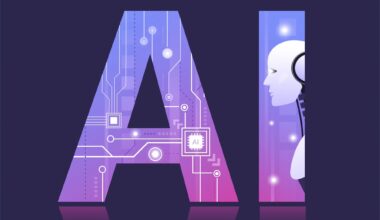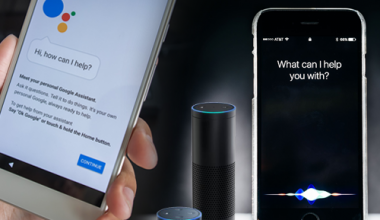Artificial intelligence is a seaming transition in the phase of the technological era capturing almost every modern field. The role of AI becomes inevitable for simplifying the strenuous risk involved in the medical domain. Assuming AI is the need of an hour for the technical wizards looking for immaculate results.
Information’s overwhelming nature makes it a perfect contender for the use of AI over various orders, from finding and pathology to sedate revelation and the study of disease transmission. In the meantime, the affectability of medicinal information brings up basic issues around protection and security.
Around 90 percent of all healthcare information originates from imaging innovation, yet by far most of it goes unanalyzed. The fundamental zones of a center for the UK focus will be radiology – the investigation of restorative imaging – and histopathology, which manages changes in tissue brought about by ailment.
Applying AI over these two controls could reshape restorative diagnostics. As indicated by Walport, a definitive objective is to prepare AIs over various maladies with the goal that they can propose potential determinations from X-beam, for instance.
Artificial Intelligence’s role in the decisive approach
The initial phase in the prohibition procedure is to perceive the constraints of existing emergency clinic conventions, why we need AI in intense consideration, and lastly how the focal point of therapeutic basic leadership will change with the reconciliation of AI-based investigation.
The subsequent advance is to build up a procedure for changing the focal point of therapeutic training to enable doctors to keep up oversight of AI.
Doctors, medical caretakers, and specialists in the field of safe emergency clinic correspondence must control the change to AI coordinated consideration in light of the fact that there is a critical hazard during the progress time frame and a lot of these hazards is inconspicuous, exceptional to the emergency clinic condition, and outside the skill of Artificial intelligence creators.
AI’s acute execution
Supporting artificial intelligence in the medical field fosters rapid development feels the world experts. AI-empowered restorative devices are created and assume control over parts of human services, and the topic of therapeutic risk should be tended to.
Organizations and research foundations declare that AI frameworks can beat specialists in diagnosing coronary illness, identifying skin disease, and performing medical procedures.
Man-made intelligence is required in intense consideration since AI identifies complex social time-arrangement designs inside datasets and this dimension of examination rises above customary limit-based investigation connected to medical clinic conventions being used today.
Consequently, medicinal instruction should change to provide social insurance laborers the capacity to comprehend and over-read social time example-focused interchanges from AI.
Solution for medical negligence
Patients can be taken care of by the independent man-made intelligence to look if a patient needs to undergo treatment from the doctor. US government handed over the main ever restorative administrative endorsement to a self-ruling AI gadget to the IDx-DR retinal scanner.
The developers gained special medical negligence insurance to deal with the main issues. An association could survey the insecurity of every AI item and enable the designer to popularize it as a byproduct of paying the proper “hazard charge” to the controller.
A progressively disputable proposition has been the recommendation that a self-governing AI apparatus could lawfully be viewed as an individual, and in this way could itself be accused of an off-base choice. “Electronic character” would imply that AI programming could be held at risk for missteps.
This could be an answer for situations wherein an appropriately coded AI device prepared on a suitable informational index achieves a restoratively careless result. On the off chance that protection was necessary for electronic people, general society and the therapeutic professional depending on an AI device would be shielded from its mix-ups.
The European Parliament as of late supported this arrangement and, in spite of the fact that it might be pointless and untimely at this stage when AI frameworks become progressively independent, it might be an intriguing answer for settling the subject of risk.
Accuracy enhancement with Artificial Intelligence
Maintaining exactness in the medicine paves looms the capability that ensures the genes, lifestyle, and body condition of a particular person. This provides the doctors with a handful of insight for adopting suitable treatments for varied diseases.
Success can only be attained if intelligence possesses the nature of physician and updating skills at an enormous pace.
We have to accentuate the significance of coordinating such calculations with the information of doctors. In the grand challenge of the International Symposium on Biomedical Imaging, contenders made computational frameworks for identifying metastatic bosom malignant growth in entire slide pictures of sentinel lymph hub biopsies.
The champ calculation had a 92.5% achievement rate. At the point when a pathologist autonomously evaluated similar pictures, the achievement rate was 96.6%.
Consolidating the profound learning framework’s expectations with the human pathologist’s determinations expanded the pathologist’s prosperity rate to 99.5%, an around 85% decrease in the human lapse rate.
Also Read:
How AI is Shaping the Telemedicine Industry
An augmented medical practice with Artificial Intelligence
A noteworthy use of AI in social insurance is gathering, processing, normalizing, and tracing information. The Artificial intelligence research part of the member, Google, propelled its Deep Mind Health venture, which is utilized to mine the information of restorative records so as to enable better and quicker wellbeing administrations.
In 2016, they propelled an agreeable task with the Moor-fields Eye Hospital NHS Foundation Trust to improve eye treatment. To research how innovation could dissect eye examines, Moor-fields shared a lot of one million anonymized eye checks with Deep Mind and some related unknown data about eye conditions.
IBM Watson introduced its unique program for oncologists to give clinicians proof-based treatment alternatives. IBM Watson for Oncology has a profound potential to break down the significance and setting of organized and unstructured information in clinical notes and reports that might be basic to choosing a treatment pathway.
At that point by joining characteristics from the patient’s record with clinical mastery, outside research, and information, the program recognizes necessary treatment plans for a patient.
IBM announced another program called Medical Sieve. It expects to fabricate the cutting edge ‘subjective associate’ with diagnostic, thinking abilities, and scope of clinical knowledge.
Medical Sieve is able to aid clinical decision-making in radiology and cardiology. The ‘psychological wellbeing associate’ can examine radiology pictures to spot and identify issues in a well-versed method.
Deep Genomics means to discern designs in enormous informational collections of hereditary data and therapeutic records, searching for changes and linkages to illness. They are chipping away at another age of computational advances that can provide doctors the proper analysis of a cell when DNA is changed by hereditary variety, regardless of whether regular or restorative.
Virtual patients in the medical domain
Virtual patients are a unique design pattern of an intelligent program that simulates real-life medical scenarios; learners emulate the roles of health care providers to obtain a history, examine, and make clinical and restorative decisions.
VPs are intended to associate in 2D and 3D virtual universes and to take part in intense and personal exchanges with clients. Artificially programmed VPs connect verbally and nonverbally, and the most refined VPs approach verisimilitude by taking part in rich discussions, perceiving nonverbal prompts, and thinking about social and passionate variables.
Research recommends that VPs can effectively encourage students obtaining of center information in psychiatry and help to nurture their aptitudes in history taking, meeting, clinical thinking, basic leadership, and surveying suicidal hazards.
The utilization of VPs offers a few focal points when contrasted with customary strategies for showing clinical abilities. Web-based learning materials, for example, VPs, are convenient at any place if there is a PC with a web association.
Virtual patients are more homogeneous than normal patients which avoid bewilderment in formulating disease.
Conclusion
There are more unanswered inquiries today than we can manage and ideally, with open discourses around the world, this will clear up as AI is turning into a reality. Computer-based intelligence additionally has genuine restrictions on social insurance.
Gauging and expectation are intervened dependent on priority on account of AI, however, calculations can be failing to meet expectations in novel instances of medication reactions or treatment obstruction where there is no earlier guide to expand on. Thus, AI may not supplant implicit information that can’t be classified effectively.
About Fusion Informatics
We are well aware of the significance of AI and its influential capability towards the advancement of the future. Fusion Informatics holds a team of experts striving upright for the challenges in technology. We take extreme concern about the client’s needs throughout the development process.
We are leading destinations for varied industries in curating AI that will serve the company in the distant future. We are highly motivated and dedicated to the necessity of satisfying clients through our solutions.







